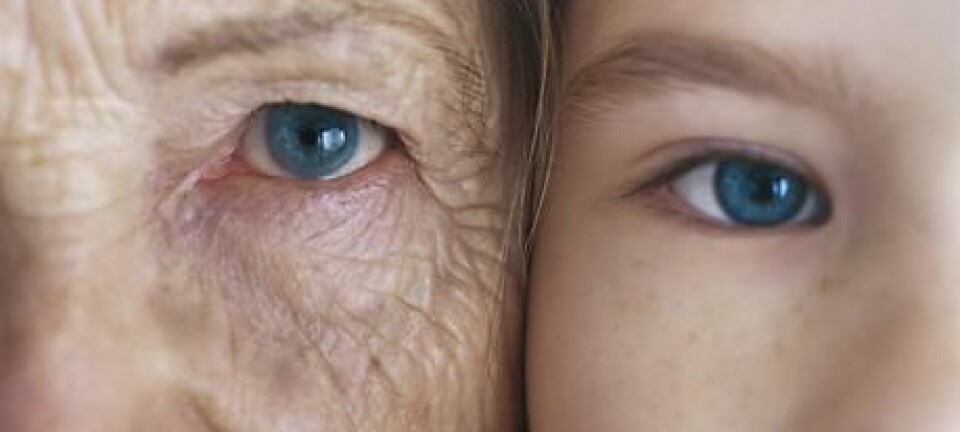
Synthetic DNA is tomorrow's medicine
Scientists have developed proteins that can make synthetic genetic material evolve over generations in a similar way to DNA. The breakthrough could lead to a completely new form of medicine.
An international team of researchers has created revolutionary proteins that can copy synthetic genetic material – the so-called XNA (Xeno-Nucleic Acids).
The breakthrough could pave the way for doctors to start treating diseases with XNA by letting the synthetic genetic material intervene and stop essential processes in the course of a disease.
In principle, this method could work on all diseases.
The findings are published in Science.
This is a quantum leap forward, which opens up a completely new research field where XNA can be used for instance in medicine
”Our international research collaboration has led to a breakthrough development in the potential use of synthetic genetic material in a variety of contexts,” says Professor Jesper Wengel, the head of the Nucleic Acid Center at the University of Southern Denmark (SDU), who headed the Danish contribution to the project.
“This is a quantum leap forward, which opens up a completely new research field where XNA can be used for instance in medicine.”
How to create synthetic DNA
Scientists have been able to create XNA for the past 20 years.
XNA is synthesised, so it’s roughly similar to nature’s own invention – DNA. But in XNA, the building blocks, known as nucleotides, are replaced with chemically modified buildings blocks.
The good thing about using XNA is that it enables us to create structures that don’t exist in DNA, and which have the potential to bind to all types of proteins that are essential for the course of diseases, and could thereby cure all diseases
The new findings with XNA show that DNA is just one of a series of possible ways to store genetic information.
The development of the new proteins, which can copy XNA in the same way that DNA is copied in nature, shows that heredity and evolution do not apply exclusively to DNA.
The discovery opens the door to a number of interesting perspectives:
”We have combined SDU’s expertise in modifying the structures of synthesised XNA with our partners’ expertise in modifying enzymes that convert DNA in nature. The result is that these enzymes can now work on synthetic genetic material,” explains Wengel.
“In this way we have made it possible to create the basis for progress towards a biological parallel structure to nature, in which we may be able to conduct experiments.”
This parallel structure has many exciting applications. One of these is that scientists may be able to carry out experiments with synthetic biology, for instance experiments in genetics.
In case such an experiment were to go wrong and the synthetic substances escape into nature, they wouldn’t survive long in the wild if they are based on XNA. The reason is that nature is unable to provide the chemically modified nucleotides that the XNA proteins require to copy a useable XNA.
XNA to drive research in medicine
The researcher also believes that future medicine can be based on XNA technology.
He is currently working on developing drugs from XNA, which with the help of the new proteins can be developed through a so-called molecular evolution.
Specifically, he is working on designing drugs that attack molecules that are essential for the functioning of the disease in question, for instance a protein.
The essential protein is first attacked in the laboratory by billions of tiny XNA fragments. Some of these have a biochemical structure that enables them to bind to the essential proteins.
Once the XNA fragments have attached to the essential proteins, the newly developed protein amplifies the XNA fragments that are particularly effective at binding to the essential proteins.
This process is repeated about ten times until the XNA piece with the strongest binding abilities is found.
This piece will bind so strongly to the proteins that the disease cannot develop any further.
The XNA fragment with the strongest binding abilities could then be mass-produced in chemical labs and be prescribed to patients as medicine.
In simple terms, this involves letting XNA adapt to a disease in the same way that evolution adapts DNA to various purposes. In other words: evolutionary medicine.
”The good thing about using XNA is that it enables us to create structures that don’t exist in DNA, and which have the potential to bind to all types of proteins that are essential for the course of diseases, and could thereby cure all diseases,” explains Wengel.
“The body metabolises many DNA pieces before their medicinal function becomes active. That doesn’t happen with XNA because it’s possible to design XNA so that it cannot be metabolised by the body.”
Potential revolution in medicine research
This is a completely new approach to medicine, and the researcher hopes that XNA-based drugs can be put on the market within the next ten years or so.
The researcher also sees a bright future for parallel biology using XNA. He reckons it may at some point be possible to create fuels and other useful products by constructing one-celled organisms based on XNA.
Such organisms could be constructed so that they can convert for instance water, CO2 and sunlight into fuel.
--------------------------------
Read this article in Danish at videnskab.dk
Translated by: Dann Vinther







